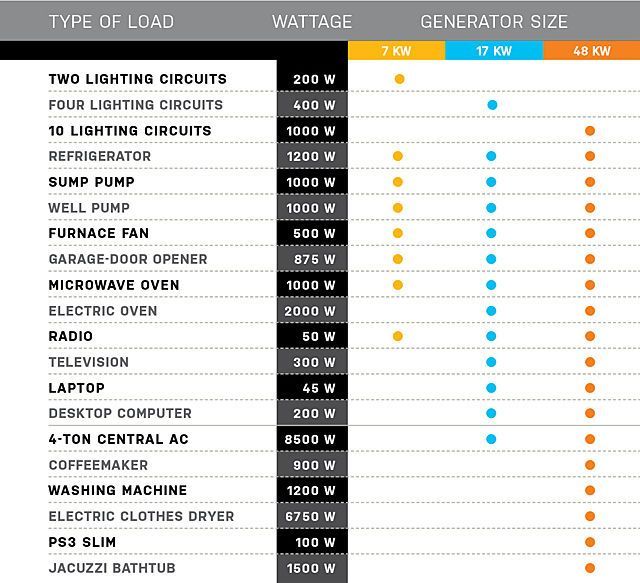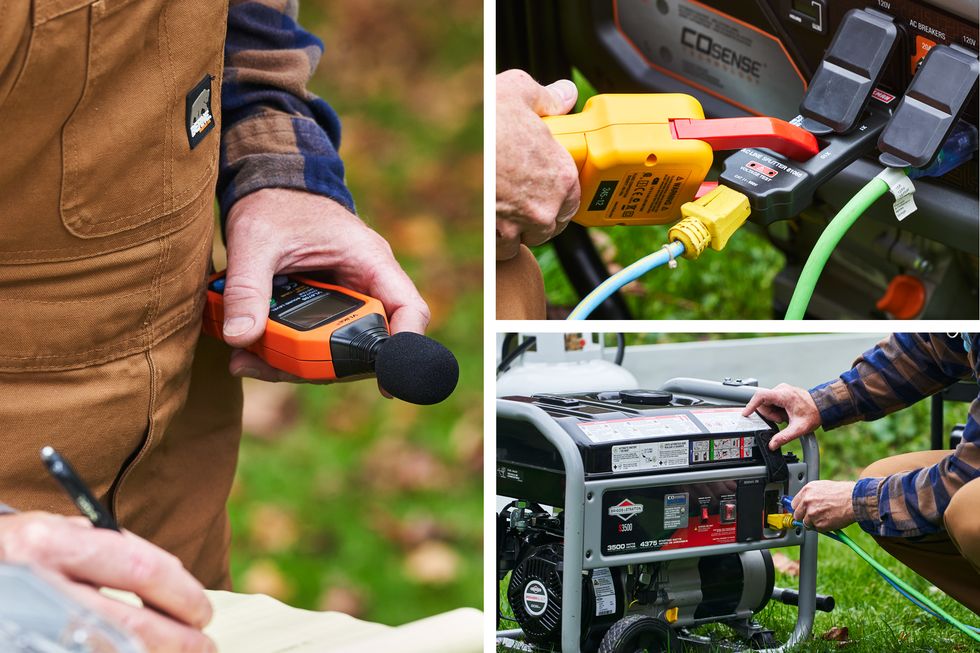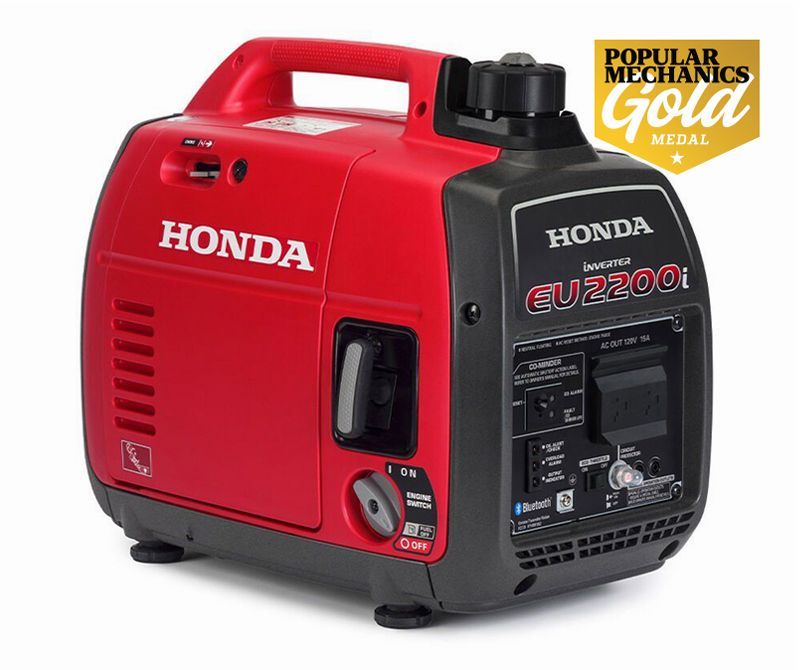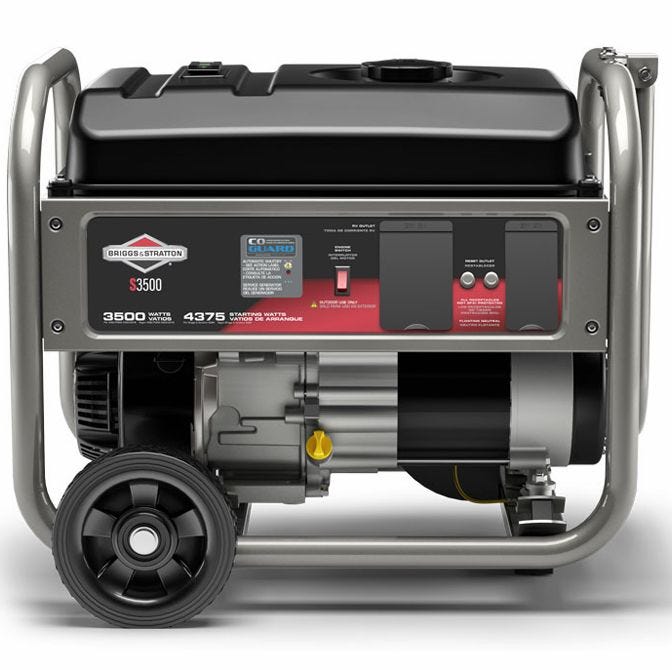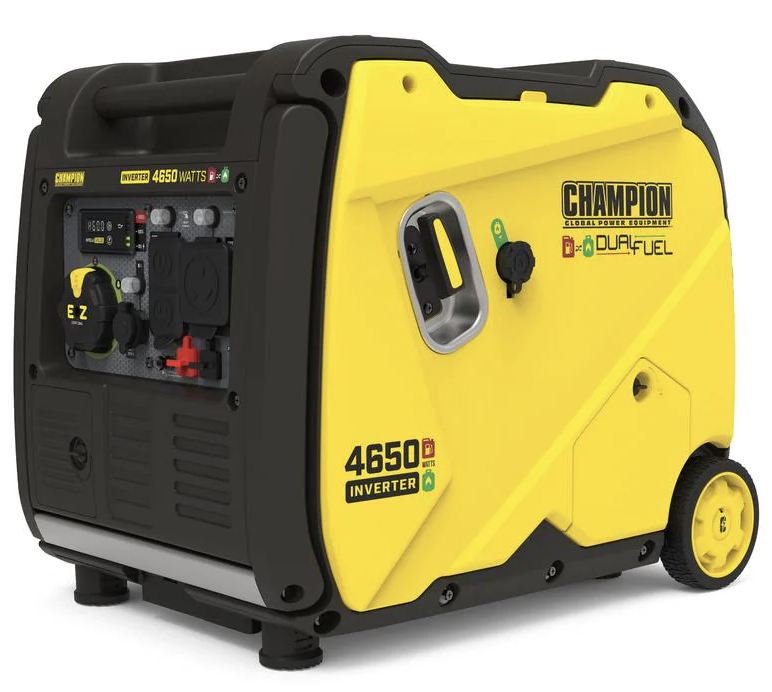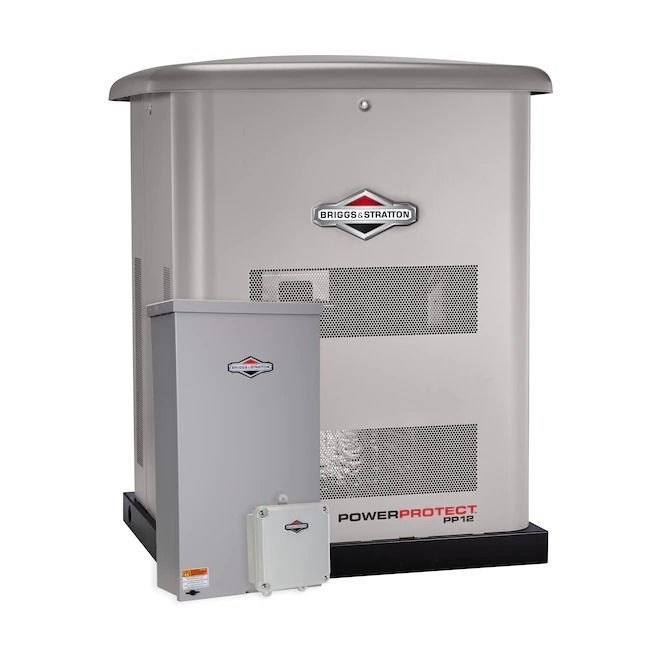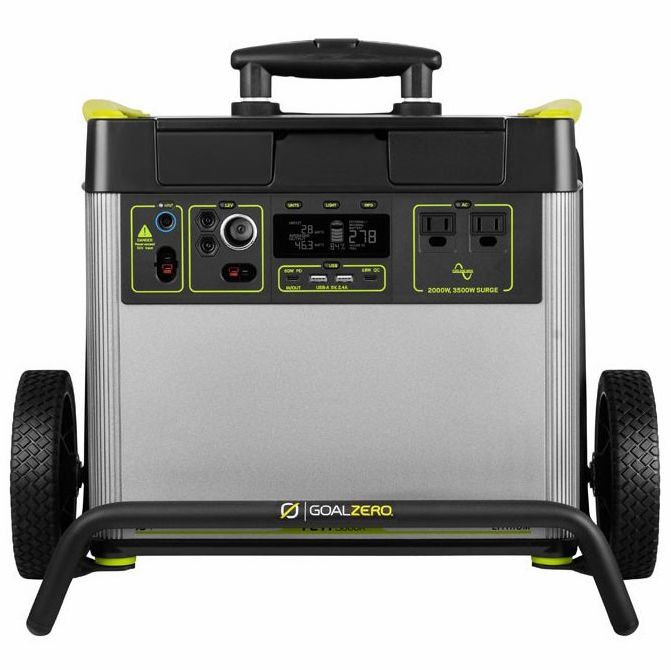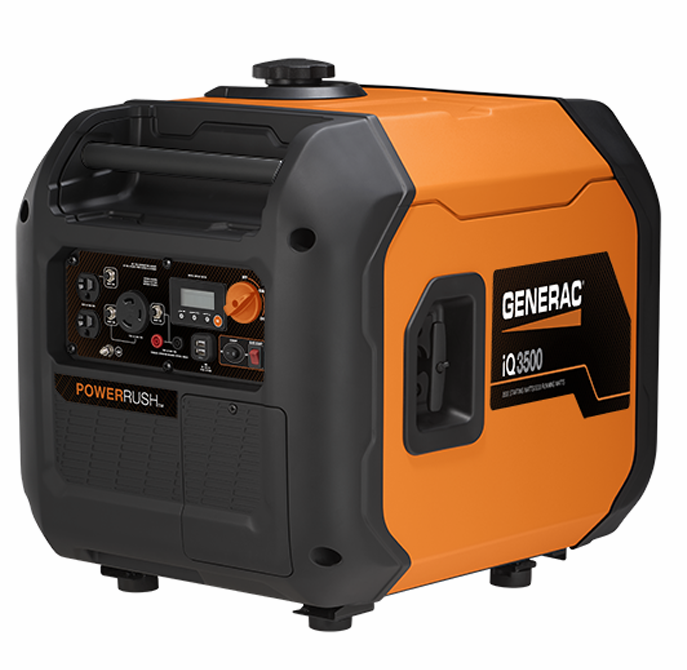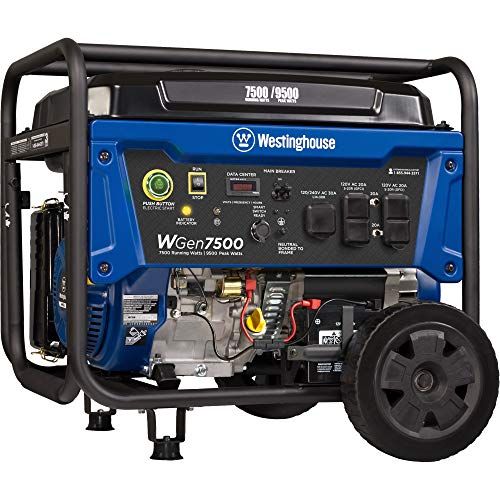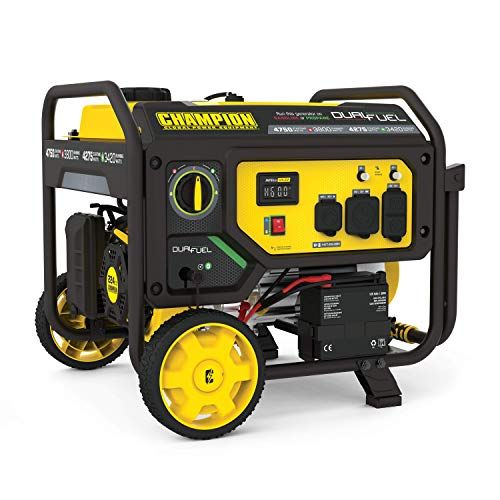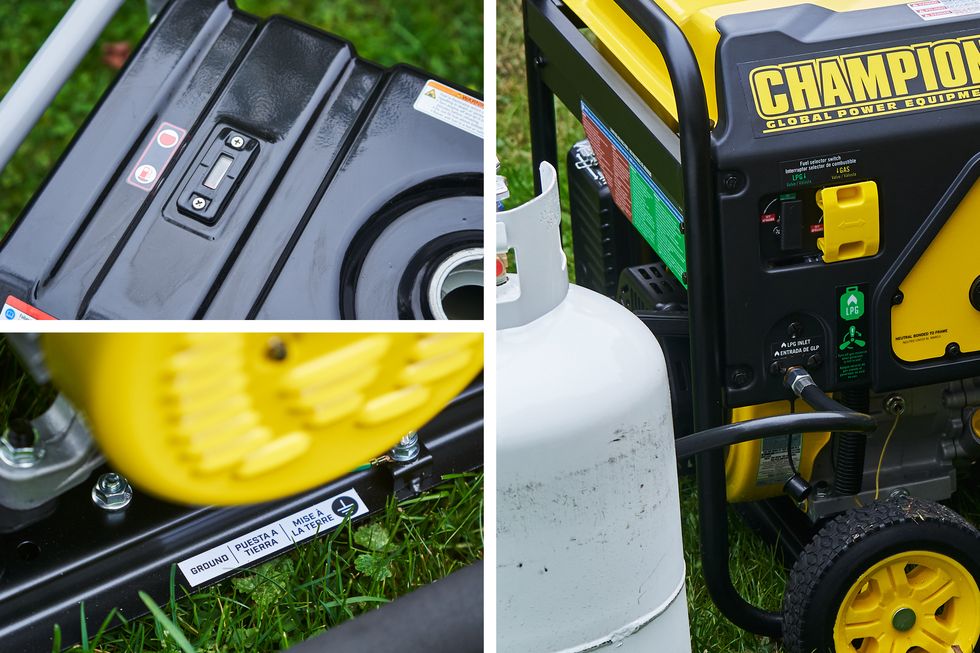
The Best Home Generators of 2023
With extreme weather events becoming more frequent, home generators have become fairly common. Anyone who lives in a suburban area often hit with power outages after storms is familiar with the sound of dozens humming throughout the neighborhood. And you don’t have to commit to a big unit sitting fixed in your backyard if you don’t want to; there are portable models that you can deploy when needed and bring with you for camping and cookouts. Since prices are coming down, generators are becoming more attainable for just about anyone who wants to keep one handy.
The Best Home Generators
What You Need to Know About Home Generators
Before running out to buy a generator, it’s important to think about how and where you’re going to use it. There are often laws, rules, and restrictions regarding their use in residential homes, with homeowners associations, at campgrounds, or on construction sites. Picking the right one means you’ll be able to power up the appliances or equipment you need. Picking the wrong one, or using it improperly, could damage the generator or what is connected to it, at best—at worst, it could be dangerous, posing a risk of fire, electrocution, or carbon monoxide poisoning.
How to Choose a Generator
Picking a generator depends mainly on the size of your home and what you wish to power. The average house will take at least 5,000 to 7,500 watts to run only the most critical equipment—think fridge, heat, and water. Often, a portable home generator can get you through an outage, but there are also options that are capable of powering your entire house. If you’re looking for full power, you will want to invest in at least a 20,000-watt generator; this also goes for people with exceptionally large homes or families, which will use much more power than, say, a two- or three-person household.
It’s also important to consider that while generators are certainly a hefty investment, they will pass the test of time. Most home standby generators can run anywhere from 10,000 to 30,000 hours. If you were to use it for 100 hours per year, that translates to 10 to 30 years.
Types of Generators
➥ Standby
Standby generators are permanently installed and connected to a home. These may power selected, critical circuits during a power outage, or may provide power for the whole home. Standby generators have systems that monitor power supplied by a utility and start automatically in the event of an outage.
➥ Portable
Portable generators, sometimes called backup generators, are used to provide temporary power when and where it is needed. Portable is a relative term; some are more portable than others. While the smallest models can be picked up and carried, most have wheels and a handle to make transport easier. However, at 100 plus pounds, picking them up to load or move may take two people. Appliances, power tools, or other devices can be plugged directly into standard outlets on the generator’s front panel. Additionally, many models have a twist-lock plug that can provide up to 240 volts and be used to power circuits in a home via a manual transfer switch.
➥ Inverter Generators
Though inverter-type generators are typically portable, we put them under their own heading because they are significantly and technically different from the other two in terms of how they work. Like most generators, inverter generators provide 120/240 volts of AC power. They generate AC current just like the others, but it’s then converted to DC (Direct Current), and then inverted back to AC. The conversion and inversion is controlled by circuitry which acts like a filter, flattens surges, and cleans up the sine wave (or oscillating wave) of the electrical current. Typical generators have varying degrees of distortion in the sine wave of the alternating current. This isn’t usually an issue for most electrical devices—the exception being sensitive electronics like tablets, laptops, televisions, and other smart devices which can be damaged by current distortion or surges. These devices will last longer with “clean” power and steady voltage. Because of the added complication, inverter generators can be significantly more expensive.
How We Tested and Selected These Generators
We researched popular features, scoured consumer reviews, and talked with product engineers to select these generators. We haven’t tested the standby models but recommend them based on our experience using and reviewing other similar generators, research into the market, and consulting reviews that customers have left on retailers’ sites. They have compelling price, design, or features that may meet your needs.
Testing the portable and inverter models was based on our experience using generators for backup power with and without transfer switches, on construction sites to run power tools and equipment, as well as running sound systems and lighting at outdoor events. We measured sound levels of these generators idling with no load, and while running under load at 2 feet and 25 feet. We used an oscilloscope to observe the sine wave of the AC current generated by these machines, and a clamp meter to check voltage output. Some examples of devices we used with large starting and running loads include a large air conditioner and a portable table saw. We evaluated these generators based on ease of starting, power response, sound levels, value, safety, and reliability to select the top performers. In addition, we included three untested models that have compelling prices, design, or other features that may meet your needs.
At half the size and less than half the weight of the other models in this test, the Honda EU2200i inverter generator is the most portable of the units we tested. It’s easy to pick up, move around, or pack in a vehicle—and since the generator is fully enclosed, it can slip into tight spaces without getting caught on anything. That enclosure is an important feature as it protects the inverter electronics and helps contain noise—the EU2200i is remarkably quiet. In testing, we measured sound levels of 68.9 decibels at the generator under no load. When we switched it to “eco” mode, which reduces engine speed when power isn’t called for, sound was reduced to 76 decibels. When we used an oscilloscope to look at the sine wave of the current generated, the curves were smooth and symmetrical, an indicator of “clean” power required by sensitive electronics. When we started and stopped things with bigger motors, like a table saw and air conditioner, the sine wave remained smooth. Running under these heavier loads, we measured the highest sound levels for the EU2200i at 81.2 decibels at the generator.
Aside from the clean enclosure, there are some other really nice features on this generator. The vent on the gas cap can be closed, so that fumes, or fuel, cannot escape. So, if it’s been packed in a passenger compartment of an SUV, the fuel or fumes associated with it won’t be released. Likewise, the power on/off switch doubles as a fuel shutoff so it can’t be forgotten. Lastly, the EU2200i has ports for parallel operation. With the correct cable, it can be connected to a second EU2200i to double output to 4400 starting and 3600 running watts. The EU2200i is ideal for camping and other outdoor events where generator noise might be frowned on.
Here’s a sample list of appliances the EU2200i can run simultaneously: a refrigerator, a box fan, four CFL lights, a radio, an LCD TV, a laptop, and a charger for a mobile device.
This generator may be under $2,000, but it’s fully capable of preventing the contents of your fridge from spoiling and keeping the inside of your house at a reasonable temperature. It is able to power up to eight circuits in your home and significantly quieter than a portable generator. It has a durable aluminum shell that will keep it protected from inclement weather. And if any issues do arise, it comes with a three-year warranty. The generator also features three removable sides, which allow for easy access should it require maintenance.
The Predator 9500 is a very big inverter, capable of powering all the critical circuits in a modest-size home. With a generator this size, we can’t overstate the importance of the four wheels it sits on and the sturdy, fold-out handle that facilitates moving it. We were able to pull it around fairly easily with one person, but lifting it was definitely a team affair. To hit the running capacity, we powered two air conditioners, a portable heater, a table saw, and a planer. Despite the slew of devices it can run, we were able to easily have conversations around the generator; it’s that quiet. Finally, the Predator comes with two plug ends for 120-volt, 20-amp outlets and one 240-volt, 30-amp twist lock, in case your cables don’t match up or need converting—handy if you buy the 9500 in an emergency and get home to find your plugs don’t match. While a lot of money, $2,000 is worth it for a generator with so much capability.
Here’s a sample list of appliances the Predator 9500 can run simultaneously: a refrigerator, a microwave, an electric water heater, a 12,0000BTU air conditioner, four CFL lights, an LCD TV, and a laptop.
We got this Briggs & Stratton (a brand with a history powering equipment for other companies) generator bearing the company’s own name on. At just over 120 pounds, it was light enough for one person to lift it out of the truck, but it would be safer with two. Wheels and a folding handle facilitate moving and positioning the generator to make setup fast and easy. Once the generator is running, a handy fuel gauge built into the top of the tank helps ensure there are no surprises with the gas level. We found starting to be straightforward, turning on the fuel, flipping the engine/ignition switch, choking the carburetor, and pulling the recoil starter. We measured sound levels, with no load, in front of the generator at 89.1 decibels. Under load, that number increased only to 90.1 decibels, while 25 feet away measured 73.2. Visually checking the current output on an oscilloscope, we found slight deterioration of the sine wave, a common occurrence with portable generators. Because of this, it’s always best to use a power strip with a surge protector when powering sensitive electronics.
Possibly the most important feature is CO Guard, which shuts down the engine when carbon monoxide (CO) levels get too high around the generator. This can help prevent CO poisoning, or death, resulting from improper placement or use of the generator. We tested this feature using a large appliance box placed over the generator, which shut down in 26.3 seconds.
Here’s a sample list of appliances this Briggs & Stratton generator can run simultaneously: a refrigerator, a microwave, a coffee maker, four CFL lights, an LCD TV, a laptop, and a charger for a mobile device.
Champion packed a lot of value in here, starting with the ability to run on either gas or propane. Monitoring the current when turning the saw or planer on, we saw a symmetrical sine wave. THD held at zero percent, though it blipped to 3.7 when we turned the saw on. With a 30-amp, RV-style plug, this generator is suited to powering a medium camper and, though it doesn’t have a 240-volt outlet, it could come in handy during an emergency at home.
Here’s a sample list of appliances this Champion generator can run simultaneously: a refrigerator, a microwave, a coffee maker, four CFL lights, an LCD TV, a laptop, and a charger for a mobile device.
The DuroMax XP12000EH has a hardy 9,500-watt running capacity, with an extra 2,500-watts of starting capacity. These big numbers mean you’ll be able to run most—if not all— critical circuits in a modest-size home during a power outage. With electric start for convenience, the XP12000EH can also run on either gasoline or propane, which gives you more options for refueling in a pinch. And, if you’ve got a big camper, it has a 50-amp RV receptacle so you can run completely off-grid.
This little guy only puts out 12,000 watts, so it won’t be able to power an entire house. But it can juice the essentials in a small one. This generator is a great option if you want a power backup for a few necessities but wince at the thought of spending upwards of $4,000. Sure, it’s still an investment, but it comes with a five-year warranty which covers parts, labor, and travel. And it does automatic weekly power checks at a low RPM to ensure that it’s working correctly when you need it without using more fuel than is necessary.
Editor’s note: This model has a longer wait time than usual with an estimated delivery or pick up time of over a month.
Solar-powered generators like this one keep getting better. As tech improves and costs come down, they’ve become a reliable source of portable electricity. We’ve used smaller versions from Goal Zero to power lights and electronics on weekend boondocking camping trips and to recharge computers and phones in makeshift work-at-home offices. But this 3000x adds a new level of capability and promise. With a huge lithium-ion battery and 2000-watt AC inverter (with 3500-watt surge capability), it can juice major appliances and a bunch of smaller ones for a weekend. That makes it a real option for emergency backup power. We ran a full-size, energy-hungry fridge, 60-watt light, and radio constantly for 38 hours. In that time, we also ran four cycles of a toaster, and recharged a laptop once and iPhone twice. Basically, the essentials you’d need to comfortably get through a short power outage. Plugging it into a wall outlet repowered the station in just under 13 hours, and Goal Zero sells 200-watt solar panels that will recharge the thing in about a day, depending on conditions.
It’s more expensive than most gas-powered portable generators, but it makes no noise, and there are zero emissions, so you can safely use it in your garage or even your living room. The compact, sturdy body and wheeled frame make it portable, conducive to use when overlanding, taking it to a worksite, and wheeling it anywhere you need a lot of power. Goal Zero also offers a home integration kit, so you can connect it right into as many as three of your house’s electrical circuits for always-on backup power.
The biggest generator we tested, Generac’s GP6500 CoSense, boasts a generous starting capacity of 8,125 watts. This means the generator can handle startup loads from big appliances or tools that could be two to three times their running watts. Larger-capacity generators like this are particularly useful as backup power during power outages. Connected to the home through a manual transfer switch, instead of running extension cords to individual appliances, the generator can run directly to the home’s critical circuits. This unit could also supply power at construction sites, or to large RVs that have significant power needs.
Wherever you use it, Generac’s CoSense technology keeps people near it safe. When the unit detects high levels of carbon monoxide (CO) in the immediate area, it quickly shuts down—preventing CO poisoning or death. We tested this feature by placing a large cardboard appliance box over the unit while running and found that it shut off in just 16.5 seconds. For a larger generator, the GP6500 isn’t excessively loud; we logged sound levels at 83.3 decibels under load from 25 feet away. When we hooked up an oscilloscope and monitored the sine wave of the current generated, we noticed some mild distortion, which is normal for most AC generators. It is a reminder, though, that if powering sensitive electronics from a generator, to do so using a good power strip with a surge protector. To ensure the unit won’t need frequent refueling, it has a large fuel tank that holds nearly eight gallons—there’s also a fuel gauge designed into the top of the tank. A digital hour meter is included on the front panel to help track maintenance—as it approaches 100 hours and starts to blink, it’s time to change the oil. At 200, routine service is recommended. Lastly, the GP6500 meets emission standards in every state, including California.
Here’s a sample list of appliances the GP6500 can run simultaneously: a refrigerator, a microwave, an electric water heater, four CFL lights, an LCD TV, and a laptop.
In particular situations where waiting for the power to come back on could pose a special danger, this generator makes sure all your needs are met. It comes with a five-year warranty and has Wi-Fi capabilities, which allow you to check the status of your generator at all times, affording peace of mind in storm season. The Generac 22-kW is designed to power your entire house, which means you will have every comfort you’re used to while waiting for your regular power to come back on. This is a particularly sound investment for families that still have kids learning from home or parents that may not have the luxury of heading into school or the office when the electricity goes out. Generac also offers 24/7 customer service if you do have any issues, since the power always seems to cut out outside of business hours.
Coupled with two sturdy handles, the metal doors and enclosure of the IQ3500 make clear that it’s a durable, well-built machine. We appreciated the convenience of the push-button electric start. During testing we used two 120-volt loads, our 15-amp table saw, and a 10-amp portable air conditioner. While turning the saw on and off, the sine wave of the current had consistent symmetrical waves. We were initially disappointed to see there’s no fuel gauge on the tank, but the LCD screen made it easy for us to monitor performance and keep tabs on remaining fuel and run time. The IQ3500 is a great compact generator for job sites and emergency home backup.
Here’s a sample list of appliances this Generac generator can run simultaneously: a refrigerator, a coffee maker, four CFL lights, an LCD TV, a laptop, and a charger for a mobile device.
Choose your fuel, or use what’s available in an emergency, with Champion’s 5500 Dual Fuel generator. Being able to pick between gasoline and propane has a couple of benefits, especially when using a generator for backup power during or after storms. Unlike gasoline, propane is very stable and won’t gum up carburetors or other components when stored for long periods between use or from storm seasons. Additionally, you might not have to deal with gasoline shortages following regional storms that take down power grids for days. We found switching between gasoline and propane to be very simple, and the 5500 started equally well on either fuel. However, since propane doesn’t pack the same amount of energy as gasoline, the running and starting watts will be slightly reduced. When we tested the 5500, we also confirmed that it runs just a little quieter on propane, with 78.2 decibels under load at 25 feet versus 81.5 decibels on gas. One note on using propane: The main power switch on the panel won’t shut the unit down—the propane switch on the fuel selection panel shuts off both the flow of propane and the generator. This prevents the propane from being left on when the generator is off. We appreciated the digital gauge at the top of the control panel that displays the voltage and current frequency being generated, as well as total hours of use—handy to keep track of maintenance schedules. The 5500 Dual Fuel is a great option for emergency backup power, but it’s also good for job sites and bigger RVs and campers.
Here’s a sample list of appliances this Champion can run simultaneously: a refrigerator, a microwave, a Keurig machine, a 10,000-BTU air conditioner, four CFL lights, an LCD TV, a laptop, and a space heater.
What’s more convenient than an electric start on a generator? An electric start with a remote. This WGen7500, when employed as a home back-up during prolonged or intermittent power outages, won’t have you running outside to start the generator again. With 7,500 running watts and 9,500 peak watts, it can power most of the critical circuits in a typical home. The 6.6-gallon gas tank holds enough fuel to run up to 11 hours, plus it has built-in gauge to help estimate how much run time is left.
Champion’s 4,750-watt generator has enough capacity to run three or four critical 120-volt circuits in your home during an outage. It will also power small to medium campers and RVs via a dedicated 30-amp, 120-volt RV receptacle. And, since it’s dual-fuel, you can run it off the camper’s propane without having to pack and haul a gas can. There are no 240-volt outlets, though, so if you need that many volts to power circuits in your home, this model won’t be right for you.
More to Know About Home Generators
Fuel Options
Most portable generators are powered by gasoline, which is the most commonly available fuel. However, when using generators for emergency power, their infrequent use presents some issues to consider. The first is that when big, catastrophic storms hit and power outages span days, local gas stations may have trouble meeting the demand and there may be long lines. The second issue has to do with the infrequent use of backup generators, which may sit for months to years between use.
Gasoline sitting in a carburetor will slowly evaporate over time, leaving gummy deposits that can block fuel from getting through, and make starting difficult or impossible without servicing. This can be avoided by turning off the fuel valve and letting the generator run until it stalls, using up the fuel left in the carburetor. Over time, gasoline can oxidize or go “stale,” losing combustibility. It may also absorb water which can then corrode fuel tanks and other metal components in the fuel system. Starting a generator regularly, as well as treating fuel with a stabilizer, can help fight these issues.
Dual-fuel generators can be run on gasoline or liquified petroleum gas (LPG), commonly known as propane. Switching between the fuels is simple, and you won’t be tied into the availability of one type of fuel. There is a bigger advantage to propane, though: It is very stable when stored for long periods of time. It won’t go stale, and it won’t gum up carburetors from sitting. Plus, some homes that use propane for other purposes may already have large storage tanks on the premises, foregoing the need to make repeated trips out for fuel. The one downside to propane is that it has fewer BTUs (British Thermal Units, a measurement of energy) than the same amount of gasoline. So, a generator running on propane will have slightly reduced starting and running watts, but will also run a little quieter than those that run on gasoline.
There are also kits available to convert many popular generators to run on propane. Some kits also allow the use of natural gas. These vary in price, depending on the application, but they start around fifty dollars.
Does Your Generator Need to Be Grounded?
To start, if you opt for a permanently installed standby generator, you’ll need a professional to pull the required permits and perform the work. And they will be the ones to ground it, since all standby generators need to be in accordance with local ordinances and/or the National Electric Code.
Regarding portable generators: Generally, if they’re powering appliances, tools, or other devices by you plugging them directly into the standard outlets on the front of the generator, then they don’t need to be grounded. If the generator is being used to power circuits in your home, maybe. It’s always best to consult the operator’s manual, a licensed electrician, and/or township ordinances with your local building officials—some localities may have requirements that differ from the NEC (National Electric Code).
Electrical circuits need to be grounded in order to operate electrical devices safely, so that any current that shorts out, or has a fault, is directed to the ground, i.e. the actual, literal earth, lest the user become the conduit to “ground.” There are two ways that generators are grounded: neutral bonded and floating neutral. Neutral bonded means that the neutral wire is bonded, or connected, to the generator frame. With a floating neutral, the neutral is not connected to the frame. In the latter case, the generator should be grounded by connecting to the ground terminal to a grounding rod driven into the ground.
Generators with GFCI (Ground Fault Circuit Interrupter) outlets, when used to power circuits in your home, require a neutral switching, manual transfer switch, and need to be grounded by connecting the ground terminal to a ground rod, driven into the soil. Neutral switching transfer switches are also referred to as three pole transfer switches.
Generator Safety
Like with grounding, a professional will install your permanent standby generator in accordance with code, the appropriate distance from all window, doors, and openings in your house. This is so carbon monoxide (CO, an odorless, colorless gas in exhaust that can poison and kill people) can’t build up to dangerous levels, as it could in an enclosed space or sitting under a window.
A portable generator, or anything with a fuel-powered engine, should never be operated in a closed space, like a garage or shed. Most manufacturers offer models that will shut down when they detect carbon monoxide building up, which prevents them from running in closed spaces. Do not run a generator in a garage, with the door open, or in front of the garage with the door open—carbon monoxide can still become trapped in the garage and slowly make its way into the home. For this reason, generators should be run outside, at least 20 feet from the house, away from windows and doors, with the exhaust blowing away from the house.
Related Exclusive Stories from the PopMech Editors
• 8 Ways to Power Your Home With Renewable Energy
• This Compressed Air Grid ‘Battery’ Is an Energy Storage Game Changer
• The Battery That Will Finally Unlock Massless Energy Storage
• Math Could Have Saved the Texas Power Grid
• The Dawn of Wireless Electricity Is Finally Upon Us. Here’s How New Zealand Will Do It.
Test Editor
Brad Ford has spent most of his life using tools to fix, build, or make things. Growing up he worked on a farm, where he learned to weld, repair, and paint equipment. From the farm he went to work at a classic car dealer, repairing and servicing Rolls Royces, Bentleys, and Jaguars. Today, when he’s not testing tools or writing for Popular Mechanics, he’s busy keeping up with the projects at his old farmhouse in eastern Pennsylvania.

